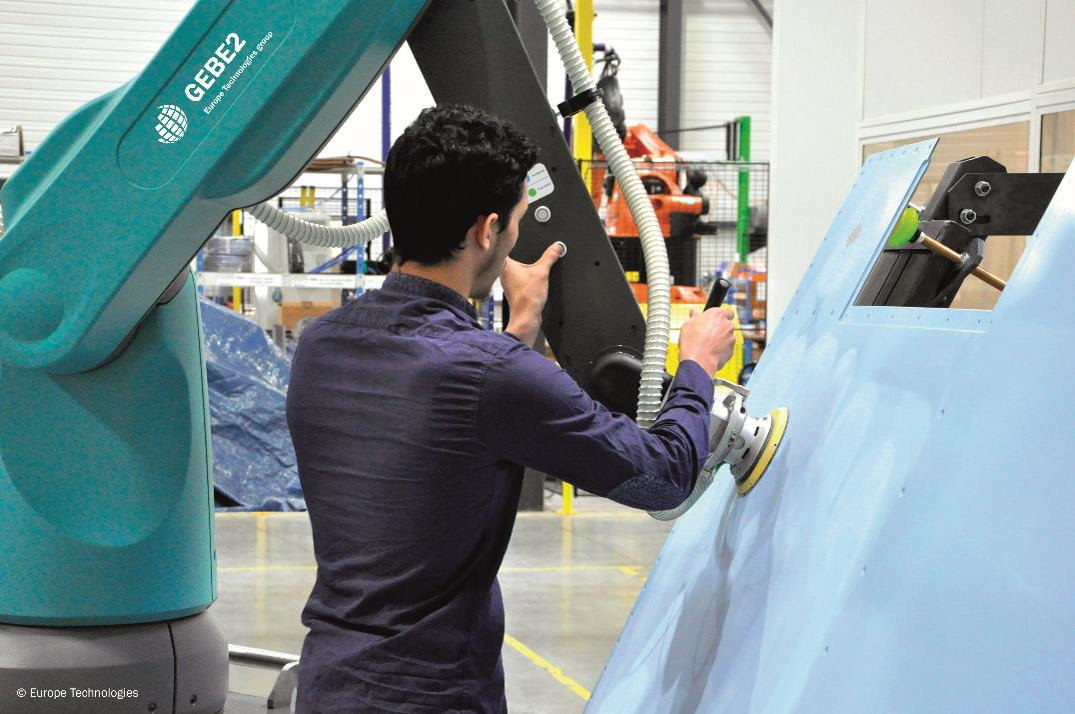Robotisation & abrasives: constraints and requirements
Robotisation is a process in its own right that demands a sophisticated level of know-how. Hence the specialisation of certain integrators in fields like sanding or machining. As Emmanuel Bergerot explains, ‘many different parameters have to be taken into account to adapt to the metal or composite material to be sanded, to the geometry and environment of the site where the robot is to be installed, the production rate required, etc.’
One of the most important criteria? ‘Compliance, which refers to mechanical flexibility. A robot is precise, but not necessarily to within a micron. The objective being to remove the right quantity of material, the compliance of the device associated with the sander is adjusted to arrive at the desired surface finish.’ To achieve this, the engineering offices carry out preliminary tests in the workshop.
Consumables: prioritising sustainability...
What abrasives are recommended for robotic sanding? Gebe2’s preference goes to perforated discs: ‘We have developed our own electric sander, which offers very good dust extraction at source as long as perforated plate and disc are used,’ says Patrick Gascher.
There is another criterion that deserves particular attention: wear. ‘Every disc change means a cost and downtime. We test different makes of discs for different applications in order to select those that offer the longest life. Once the initial tests have been done, the robot knows the wear time and can automatically change the disc, including for a disc with a different grain size’.
…with Ahlstrom’s tailored Solutions
Ahlstrom offers backings specially designed to avoid early delamination and tearing of the sanding discs used on electric hand-held disc sanders.
- This is the case in particular of reinforced heavyweight papers (basis weight > 180 g/m²) containing synthetic fibres (RDS). The TEX-STYLE™ composite is also an obvious choice due to its incomparable tear strength and internal bond.
- Among the lightweight backings (grammage <180 g/m²), the latex papers in the Blue Line range offer an internal bond better than that of impregnated papers. These backings can be reinforced with synthetic fibres that increase their tear strength even further. For instance Strong, is a premium paper solution in this respect for dry sanding.
Through Imagine Fiber, Ahlstrom also works with industrial customers to develop solutions that meet the precise requirements of their process. A form of collaboration that has opened the door to new ways to improve performance!
